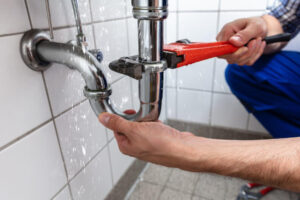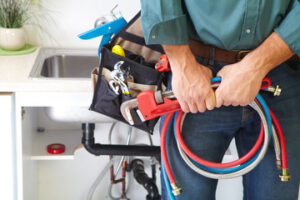Louisville Junk Removal is a service that helps you get rid of unwanted items. There are many different junk removal services on the market, but it’s essential to choose one that suits your needs. For example, some companies offer truck hauling while others provide dumpster rentals.

Whether you’re moving, doing a home remodel, or need to clean up your space, Junk Removal can be a big help. But you might wonder, “What do junk removal services cost?” The answer depends on the company and your location. Some companies offer a flat rate for their services, while others charge by the truckload or item. Some also offer a recycling service, which can save you money on disposal fees.
Many junk removal companies recycle and donate their items, so you can rest assured that your trash will not end up in the landfill. This also helps reduce pollution.
If you’re considering hiring a Junk Removal company, make sure you choose one with a good reputation and a reliable crew. The best way to do this is by checking the company’s reviews online. You can also ask friends and family for recommendations. This will help you find a company that’s reputable, affordable, and safe to work with.
Junk removal is part of the waste management industry, which includes other services like rubbish collection and recycling. This industry is popular because it helps to keep unwanted items out of landfills and gives them new life. It also aims to promote reuse and recovery, while giving back to the community. This type of service is convenient for homeowners and businesses, as it reduces the amount of trash that’s sent to landfills.
Many junk removal companies will recycle or donate any salvageable items, so they can be used by those in need. These items include furniture, toys, linens, and even appliances. Some of them will go to charities, while others will be sent to local shelters and relief groups. Junk removal services also use a variety of technologies to recycle as much as possible.
Most Junk Removal companies have a specific set of guidelines on what they’ll and won’t take. They may refuse to haul anything that’s hazardous or toxic, and they’ll usually only remove large items that their crew can easily move. This will protect you from getting in trouble with the law and keep your property free of dangerous garbage.
While it’s easy to simply throw junk away, it’s better to hire a Junk Removal company to do the dirty work for you. A professional will be able to help you declutter your house, get rid of old furniture and electronics, and even clear out the attic. You can even rent a dumpster, which is ideal for major renovations or cleanouts.
It’s affordable
Junk Removal is an environmentally friendly way to get rid of old items you no longer need. Instead of throwing them away, Junk Removal specialists recycle and donate usable items to local charities. They also make sure to dispose of the remaining junk properly, which helps protect the environment and give back to the community. The price of Junk Removal varies depending on the size and weight of the items. Larger items, such as TVs and couches, cost more to haul than smaller items, like printers and paper. Most companies include labor costs in their pricing and will provide a quote after an on-site evaluation.
The junk removal industry is booming because many people are decluttering their homes and offices, making them cleaner and more pleasant spaces. Some people are even hiring junk removal services to clean up messes left behind by deceased relatives, such as broken furniture and bedbug-infested mattresses. Some of these services have specialized crews that wear masks and gloves to handle biohazard waste, such as blood, urine, and feces.
Junk removal and hauling companies are responsible for the safe disposal of all trash that they collect. They typically recycle as much of the material as possible, aiming for zero-waste practices. They may also donate items to charity or sell them to online marketplaces. They can also take care of e-waste, which includes all electronic devices and appliances that are no longer functional.
Some Junk Removal companies are more eco-friendly than others, so it’s important to ask about their recycling process before deciding which company to hire. The best companies will disclose how much of their junk is donated or recycled, and they’ll do their best to avoid sending it to landfills.
Junk removal is a fast and convenient way to get rid of unwanted items from your home or office. It’s also good for the environment, and it can be a great alternative to renting a dumpster or dumping your waste at the landfill. You can also use it to clean up after a disaster or during a remodel.
It’s environmentally friendly
In an environment where people are becoming more environmentally conscious, eco-friendly junk removal methods have become very popular. These methods include recycling and donating items, which allows customers to save money while also helping the environment. They also ensure that the junk is disposed of properly and in compliance with environmental regulations. This method helps reduce the amount of waste that goes into landfills, which can release harmful gases into the air. These gases can cause respiratory illnesses in humans. This is why it is important to choose an eco-friendly junk removal company.
Junk removal companies that are eco-friendly recycle and donate most of the items they pick up from homes. This helps keep valuable materials out of landfills and gives back to the community. They may even sell or reuse these items as well, which is a great way to make money. This helps reduce the need for new materials and saves energy and water in the production process. It is also good for the environment because it cuts down on greenhouse gas emissions, which are released by decomposing organic waste in landfills.
Many companies also take advantage of the opportunity to use recycled materials, which reduces waste. For example, old appliances can be recycled and repurposed for other uses. This will save the planet from having to produce more appliances, which use a lot of energy. It also keeps harmful chemicals out of the landfills, which can contaminate the soil and groundwater.
Another benefit of eco-friendly junk removal is that it can help the local economy by reducing unemployment. This is because it creates jobs in the recycling and donation industries. Junk removal companies that take the environment into account can also attract more clients. This is because environmentally conscious clients want to work with companies that share their values.
It is also important to note that not all junk can be picked up by Junk Removal services. Items that have been contaminated by blood, feces, and other human fluids cannot be recycled or donated. These items require a specialized crime scene cleanup.
It’s fast
When you hire a Junk Removal company, they can get rid of your junk in no time. Most companies will send a team over to assess your junk and provide you with a quote before they come to haul it away. Some Junk Removal services will even work with your schedule, so you can have them come when it’s convenient for you.
Junk removal services are great for people who have a lot of clutter in their homes or offices. These companies specialize in getting rid of unwanted items fast, so you can focus on other things. In addition, they can help you declutter before you move or clean out an estate. They will even donate or recycle the items that can’t be used, so they won’t end up in landfills.
There are a few things that Junk Removal services won’t take, such as corrosive materials, flammable materials, and toxic materials. These types of items need to be disposed of according to specific laws, so it’s important to research your local laws before hiring a Junk Removal company. In most cases, however, these companies will recycle or donate as much of your junk as possible.
Many junk removal companies also offer dumpster rental services. With this option, a dumpster will be dropped off at your home or office. You can fill it as you go, and the Junk Removal company will pick up the dumpster when you’re ready to have it removed. This option is especially helpful for those who need to clear out large spaces quickly.
A full-service junk removal company will also make sure that any items they can’t recycle or donate are sent to a charity, so you can rest assured knowing that your stuff won’t end up in the local dump. This can be a great way to feel good about yourself while clearing out your clutter, so consider working with a full-service junk removal company if you’re ready to get rid of your junk. Just remember that it will cost more than hauling your own junk, so compare quotes before making a decision.

